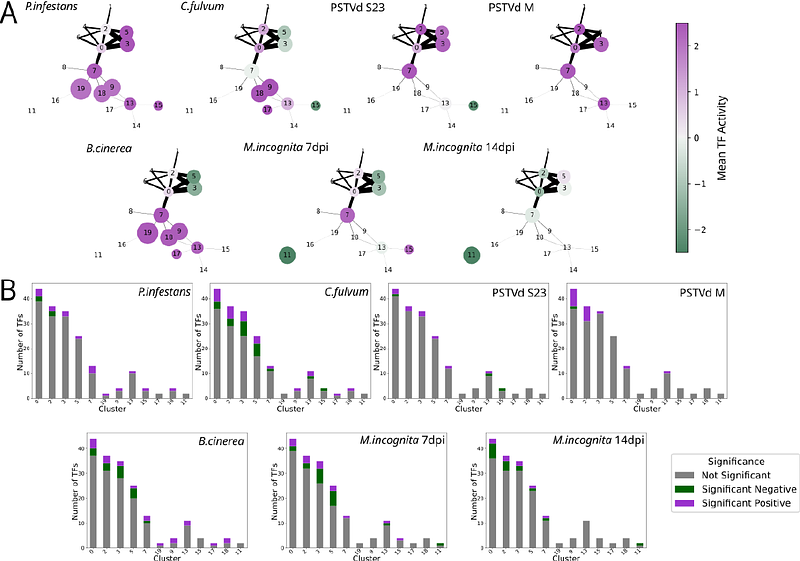A knowledge graph and topological data analysis framework to disentangle the tomato-multi pathogens complex gene regulatory network

A knowledge graph and topological data analysis framework to disentangle the tomato-multi pathogens complex gene regulatory network
multari, m.; carriere, m.; Amoros-Gabarron, x.; damy, a.; lobentanzer, s.; saez-rodriguez, J.; Jaubert, S.; Dugourd, A.; BOTTINI, S.
AbstractGlobal population is rapidly increasing, representing a major challenge for food supply, exacerbated by climate change and environmental degradation. Despite the pivotal role of agriculture, plant health and survival are threatened by various biotic stressors. Although how plants respond to each of these individual stresses is well studied, little is known about how they respond to a combination of many of these bio-aggressors occurring together. To tackle this question, first, we built TomTom, a knowledge graph gathering molecular interactions from nine publicly available databases, including transcription factors- or microRNAs- targets, protein-protein interactions, and functional terms. Then, we selected transcriptomics data of tomato subjected to six distinct pathogens and performed an integrative analysis. We found 5561 candidate genes involved in the multi-stress response of tomato. To study how the response is orchestrated, we mapped those genes in TomTom and extracted a comprehensive gene regulatory network (GRN) composed of 71 transcription factors (TF) and 1618 target genes. By estimating the TF activity, we identified 43 TFs responding either specifically to one or multiple bio-aggressors. GRN analyses with a topological data analysis approach allowed to identify 18 clusters of TFs with similar properties, yielding four main configurations localized in specific regions of the GRN. Finally, we found four ERF hubs which cooperatively coordinate the tomato response to multiple pathogens. Our findings allowed to study the complex molecular reprogramming in tomato upon interaction with different biotic agents, providing tools scalable to other questions involving tomato molecular interactions and beyond.